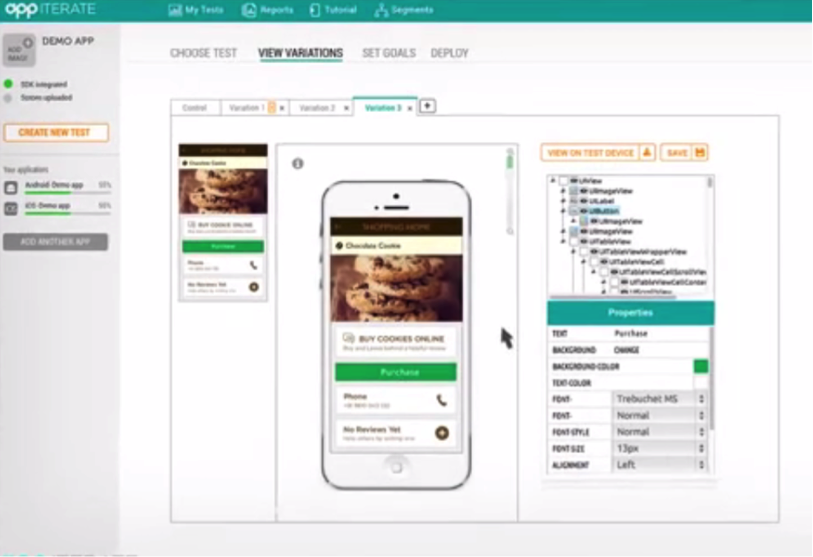Last month, I promised to bring you stories of how Indian startups took their products to the world and got the inside scoop on how WebEngage used educational content and live demos to get to 7,000 users in less than 15 months. While I have been slow in bringing more stories to you, this one should more than make up for it.
In this post, I bring you the story of Visual Website Optimizer in conversation with its founder and CEO Paras Chopra. Visual Website Optimizer is an easy-to-use A/B testing tool that allows marketing professionals to create different A/B tests using a point-and-click editor (without needing any HTML knowledge). It is one of India’s fastest growing startups and has got to 2,500+ paid customers including the likes of Microsoft, AMD, Groupon & Airbnb using great content and rigorous A/B tests.
Let’s get started.
How did you get the initial buzz going for your product?
Paras: Initial buzz was entirely product driven. The concept of visual A/B testing was non-existent then so the product was radical in that sense. A/B testing existed, but it wasn’t this easy.
Did you have marketing built into your product, and were you marketing your product as you were developing it? Or did it all start only after you had a finished product?
Yes, we detected successful A/B tests and requested for a case study from the customer automatically. The case studies gave a lot of buzz. First MVP was done in a month and after that product evolution and marketing started simultaneously.
Did you have a marketing plan in place when you started?
No, I did not have any plan. It was very organic without any plan whatsoever.
Who do you pitch your product to in a company?
Marketing analysts. Our target customer is a person who actually does the A/B tests.
I remember you mentioned on your Mixergy interview that you didn’t want the world to know that you were a one-man show to begin with. Was it difficult to look like a credible company that way? And was that an even bigger issues being an Indian product company?
No, it wasn’t difficult. As long as they were getting a good product and quick service, the customers didn’t care to verify whether it was a one-man show or a 100-people company. Interestingly, many people still don’t know we’re an Indian company.
As Visual Website Optimizer grew, how have you scaled up your marketing? Increased frequency in terms of content? Bigger campaigns? Targeting higher-value customers for your enterprise plan? Also, how have you scaled up your team to take care of these activities?
A bunch of things. Increased frequency from one post per week to two on our blog. Parallel guest posting. Making guides and dedicated landing pages for SEO. Comprehensive retargeting. Started PPC and display to measure ROI. I don’t think marketing should aim to target higher-value customers. They probably need a lot more offline interaction, so marketing works on nurturing them currently.
On the people side, we scaled it by bringing in additional super-smart people. Including me, right now we have a team of three. We’re looking to expand it by adding three more people. Yes, now we have a plan and going forward clearly defined roles in content marketing, generalist tasks, paid marketing and design.
What marketing channels have you used? What has been the most effective for you? Why have they been so effective?
Most effective has been our own case studies and comprehensive guest posts in prominent publications such as Smashing Magazine, SEOMoz, CopyBlogger, MarketingProfs, etc. We also nurture our user base by regularly sending them case studies and use cases.
What about paid channels? How do you go about choosing the right ones?
We’re still learning on this, but the key is to explore new paid marketing channels that haven’t been exploited yet. All good paid marketing channels dry up ultimately and ROI dwindles. So you have to be on the edge of exploration. That’s how markets work.
How do you measure the success of your marketing campaigns? Do you compare them to your other campaigns? Industry benchmarks? Or just get an overall feel whether they are successful or not?
The only metric our marketing cares about is number of free trials. I believe that once free trial is generated, product should speak for itself so revenue should be a function of product if free trials are from the intended audience. Shares, visits, etc. are all fluff. We don’t obsess about them. We do compare all our activities to see which one gives most bang for the buck and most volume.
How do you use VWO to improve your own conversion rates? What are the top 2-3 biggest successes you have had from A/B testing?
We conduct many tests. Some examples:
http://visualwebsiteoptimizer.com/split-testing-blog/headline-test-increases-clickthroughs/
Behavioral targeting: http://visualwebsiteoptimizer.com/split-testing-blog/behavioral-targeting-case-study/
Heatmaps: http://visualwebsiteoptimizer.com/split-testing-blog/increase-conversions-using-heatmaps/
http://visualwebsiteoptimizer.com/split-testing-blog/left-vs-right-sidebar-which-layout-works-best/
Right now, five different tests are running on our website 
Apart from the A/B tests, what other numbers do you look up on the website? Funnel drop-offs, bounce rate, what else do you look at?
Navigation paths and traffic sources with highest conversion rate.
I love the blog you have. How did that get started? And how do you measure its impact?
I love writing. Have written a book on Nihilism, so I can write whole day long  Impact, was measured in terms of traffic to blog and then conversion of that traffic to trials.
Impact, was measured in terms of traffic to blog and then conversion of that traffic to trials.
What kind of community do you have around your products? How do you keep them engaged?
We have a very lively community on Twitter, GPlus, Facebook and our blog. We have 3000+ followers, 2000+ blog readers and remember that A/B testing is a niche. In terms of content, again case studies with actual learning work best. Just numbers without flesh doesn’t work.
What about partnerships and integrations? ClickTale, Drupal, how have they helped you increase your reach? How did you go about getting them?
Yes, partnerships increase reach if done properly. For commercial companies like ClickTale, they approached us. For open-source like Drupal, we simply developed modules.
What about your personal brand? Have you built that and used it to take the word out about your products in turn?
Yes, I think so. My blog and interviews such as on Mixergy help a lot. Our bootstrapped story helps a ton too.
What about the marketing team? How big is it and what roles do each of them play? What do you think is an ideal marketing team for a tech startup?
Ideal marketing team is: content, paid, generalist and designer.
We have a lot of good products being built in India but very few go on to become blockbusters. Where do you think these startups are faltering with their marketing? What advice do you have for them?
I think they do a very poor job on using the content effectively. My advice would be to product great content consistently, share it with influencers, build a brand of the company around content and eductation and just keep scaling that up.
That’s some great advice Paras. Thanks a lot for sharing them and being an inspiration to the Indian startup community at large.
Dear readers, what did you think of the interview? What else would you like to know when I talk to more successful startups about their marketing? Let me know in the comments.
Reblogged from PokeandBite.com




